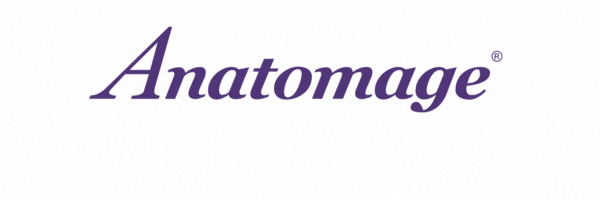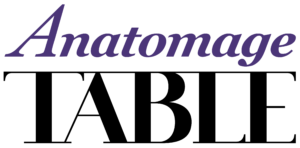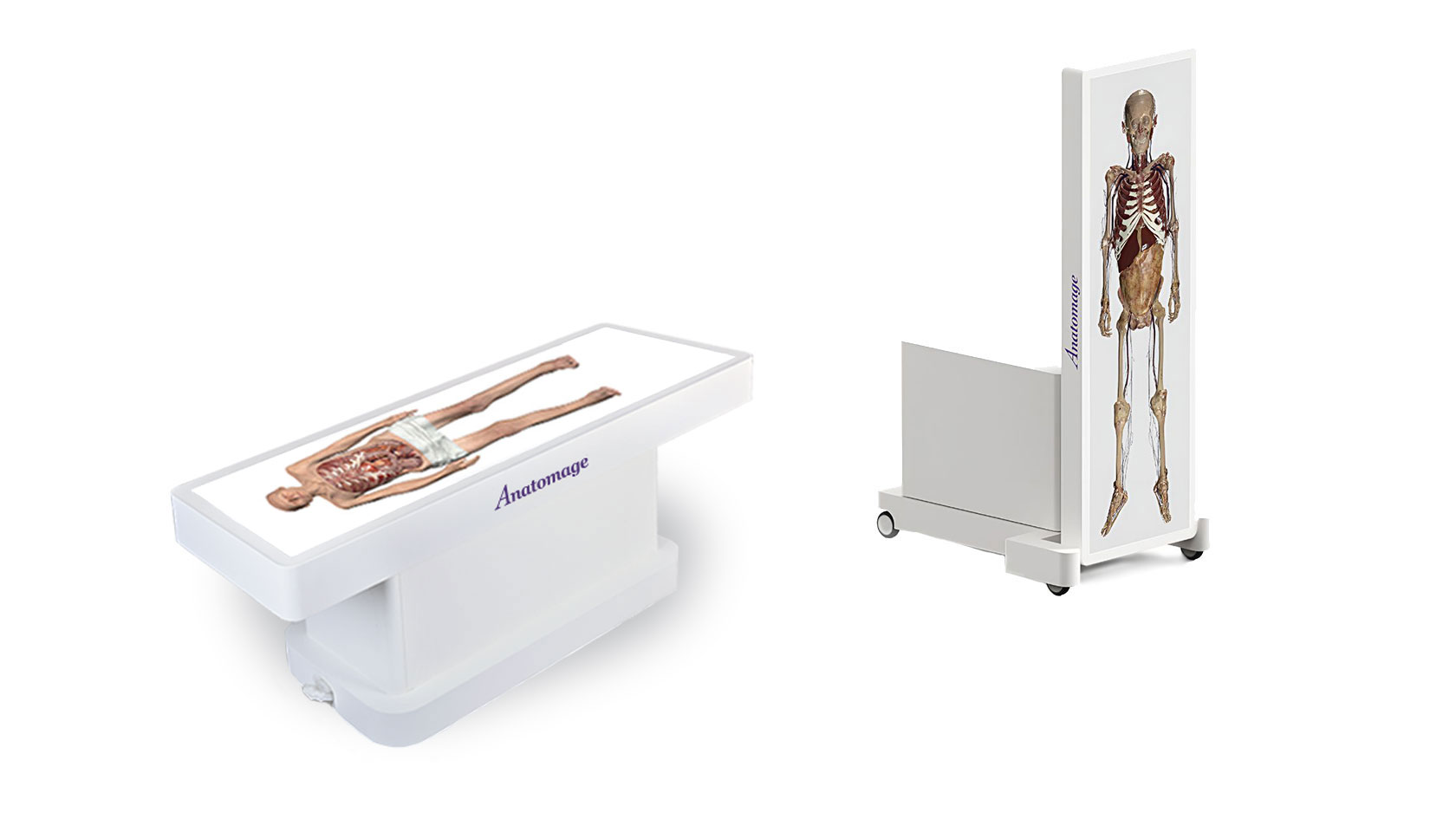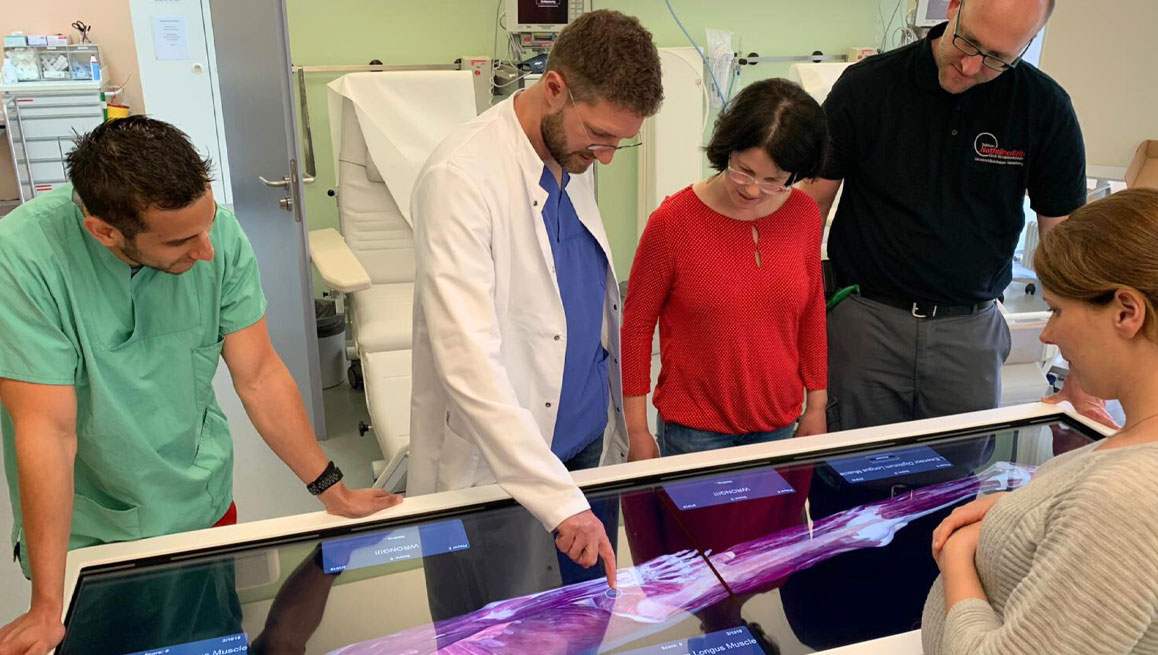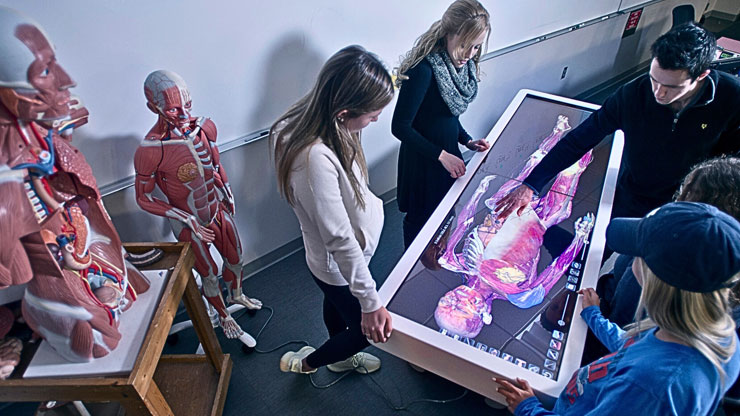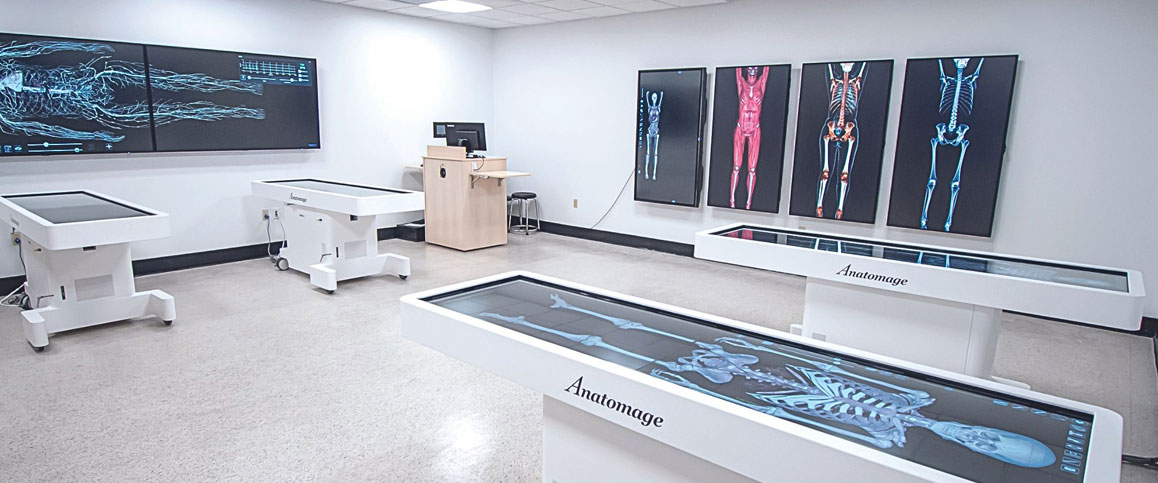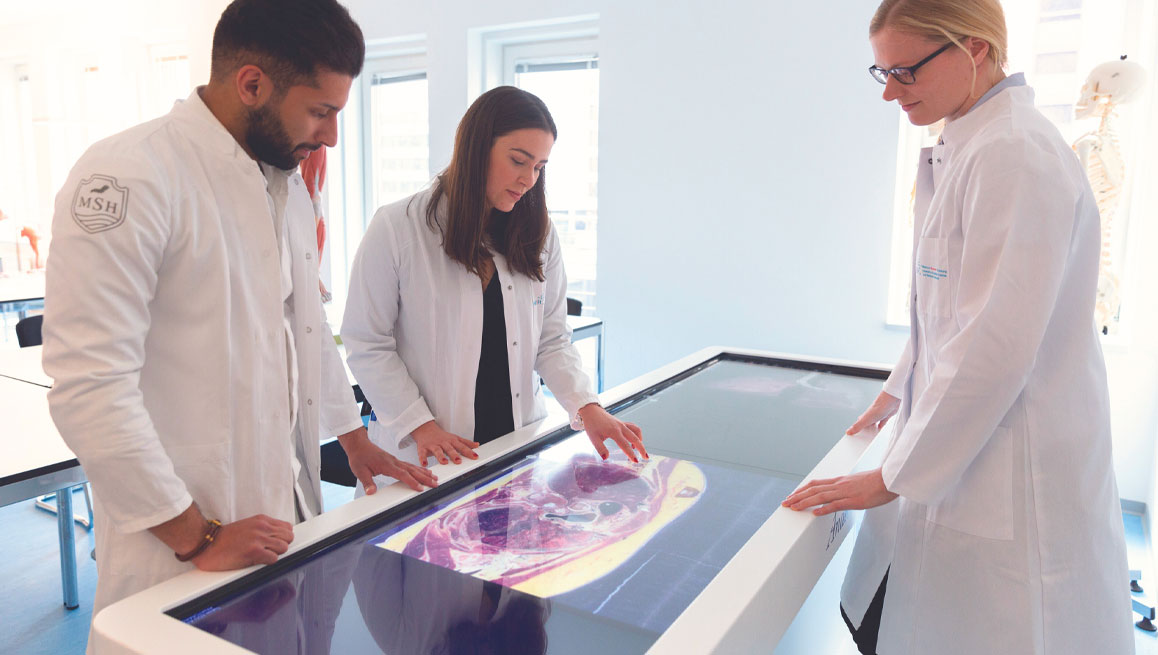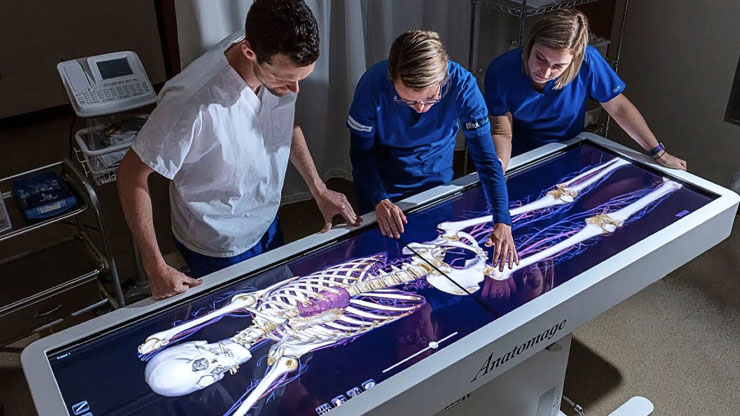The Anatomage Table is the most advanced real-human-based 3D anatomy and medical education system. This state-of-the-art platform offers digitized human cadavers, superior medical learning tools, and realistic 3D anatomy experiences, transforming medical education and training. By incorporating the Anatomage Table, institutions can enhance learning outcomes, lower laboratory costs, and establish their technological leadership.
